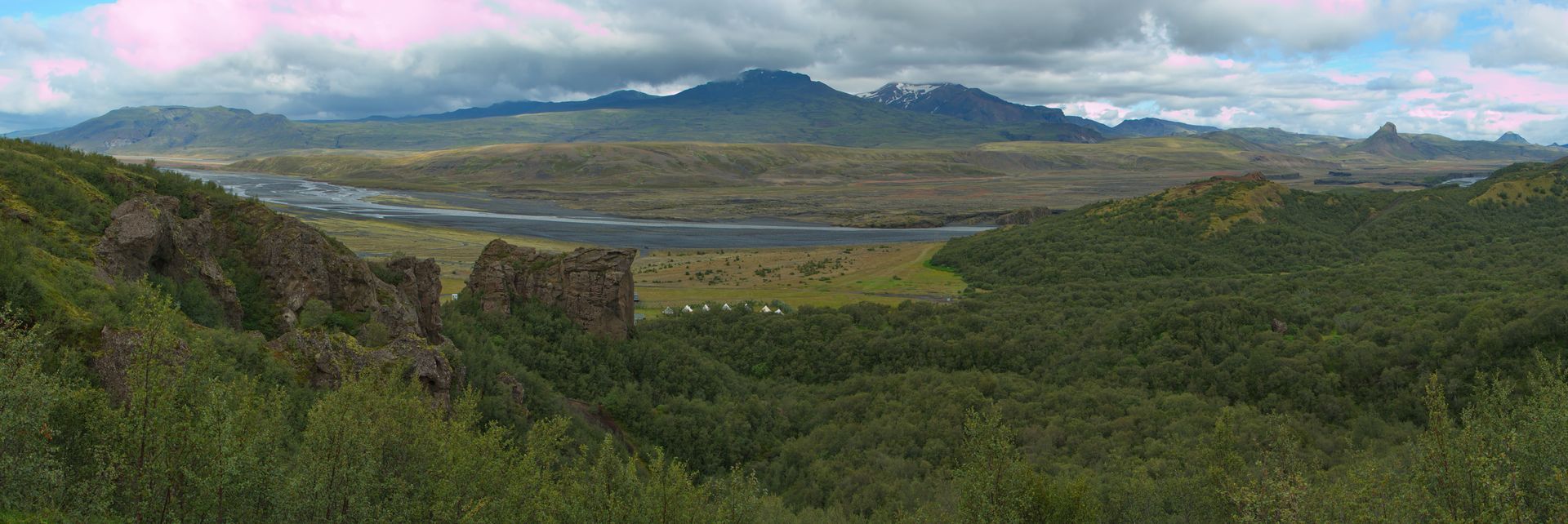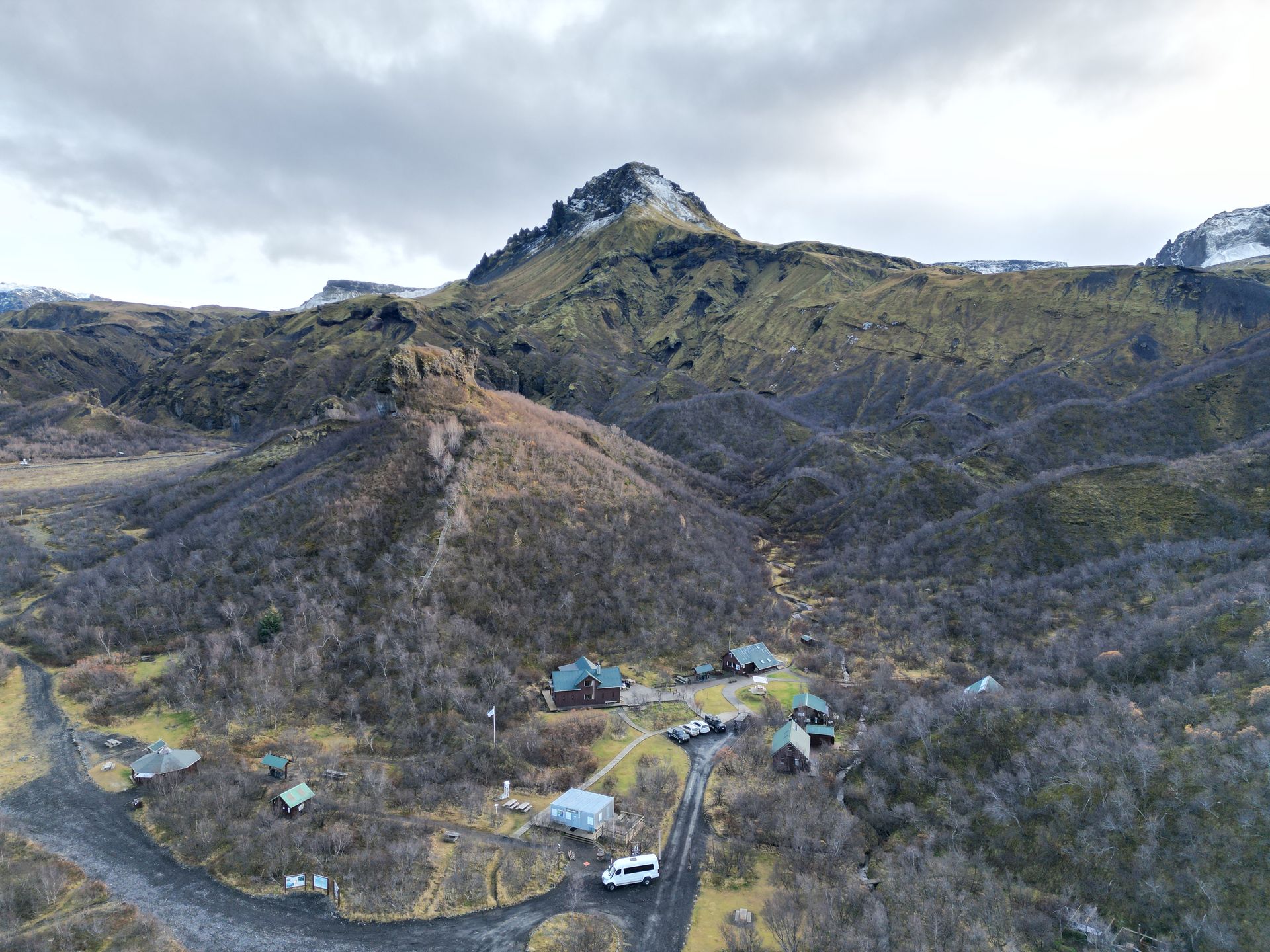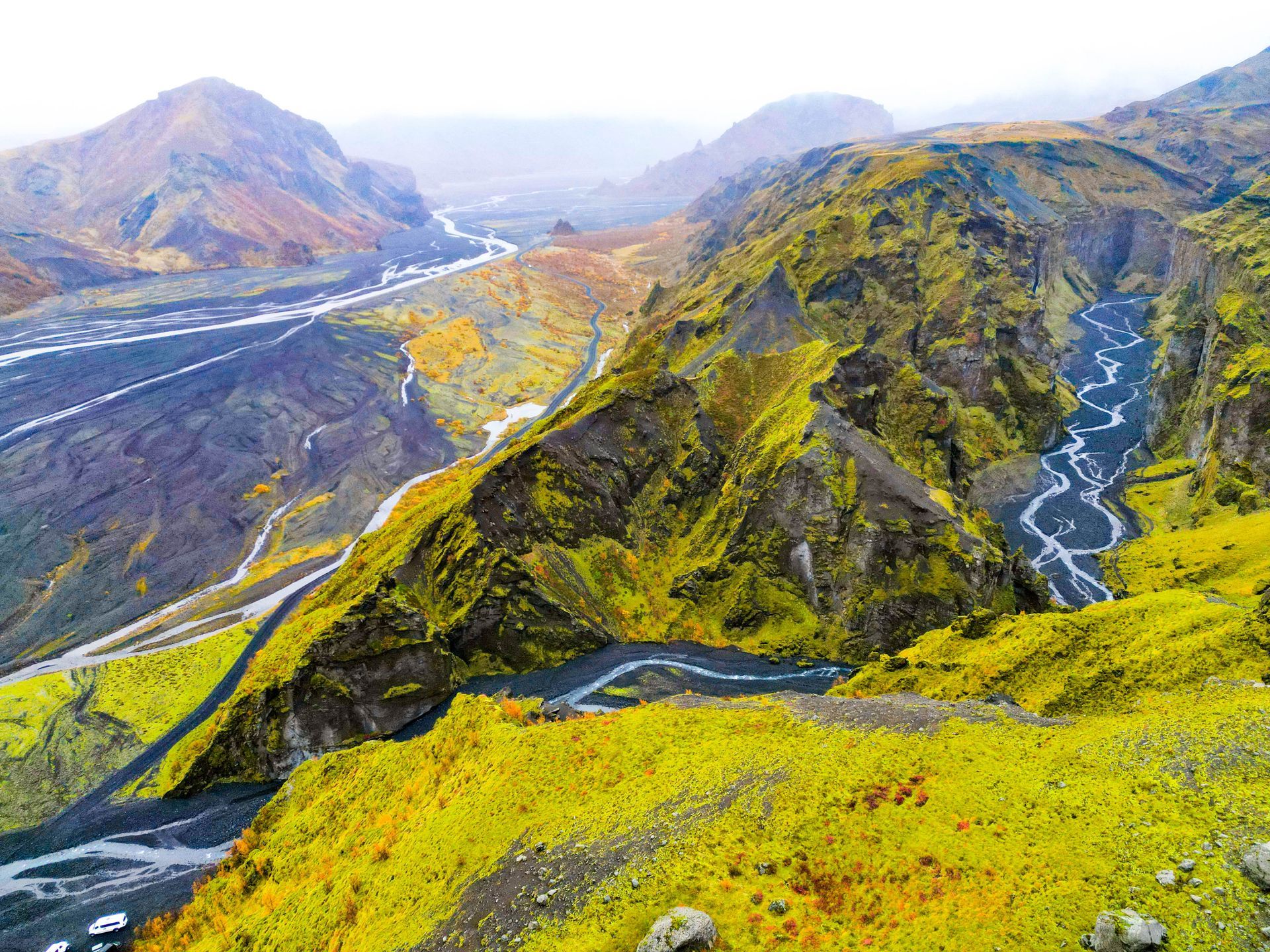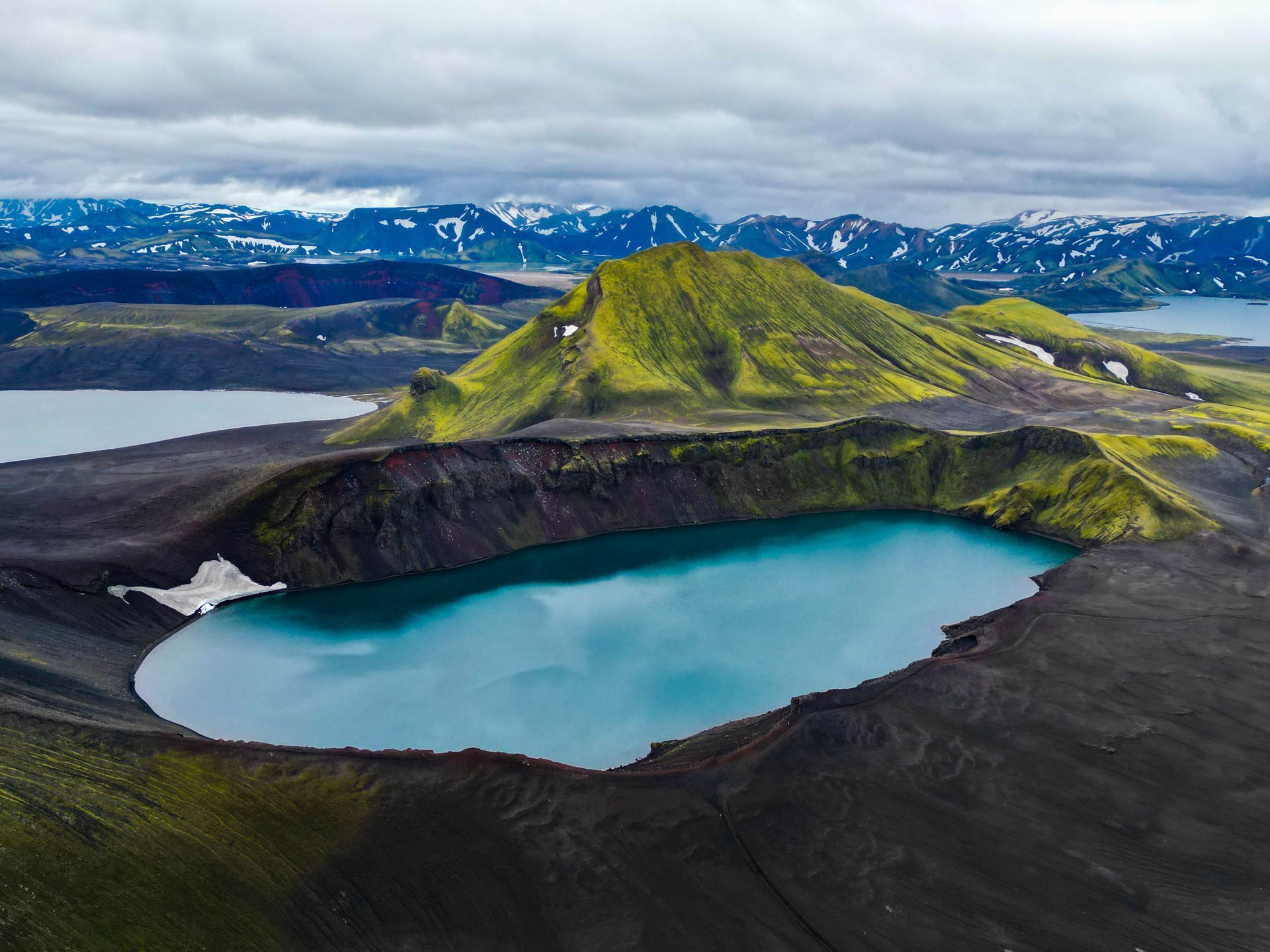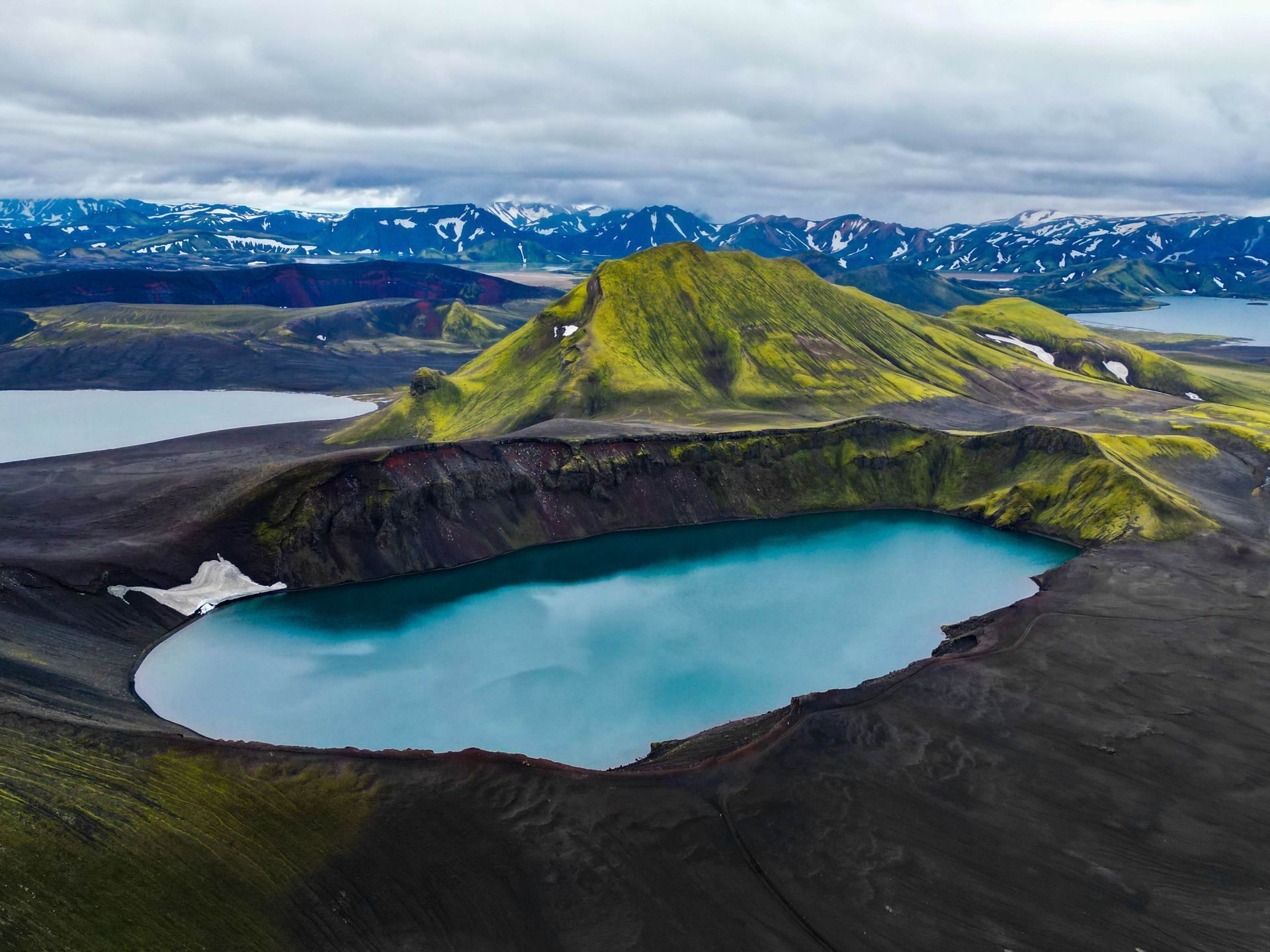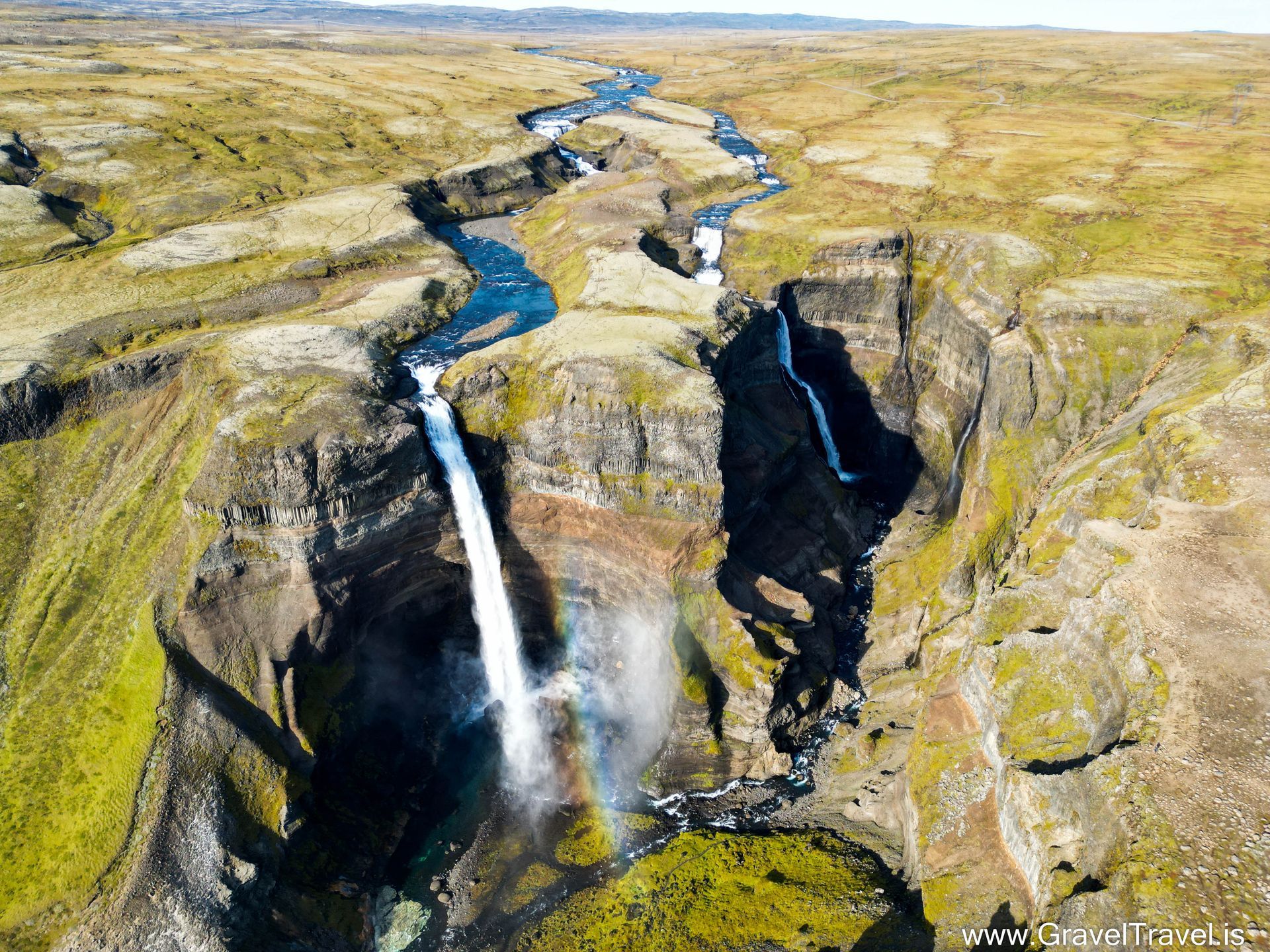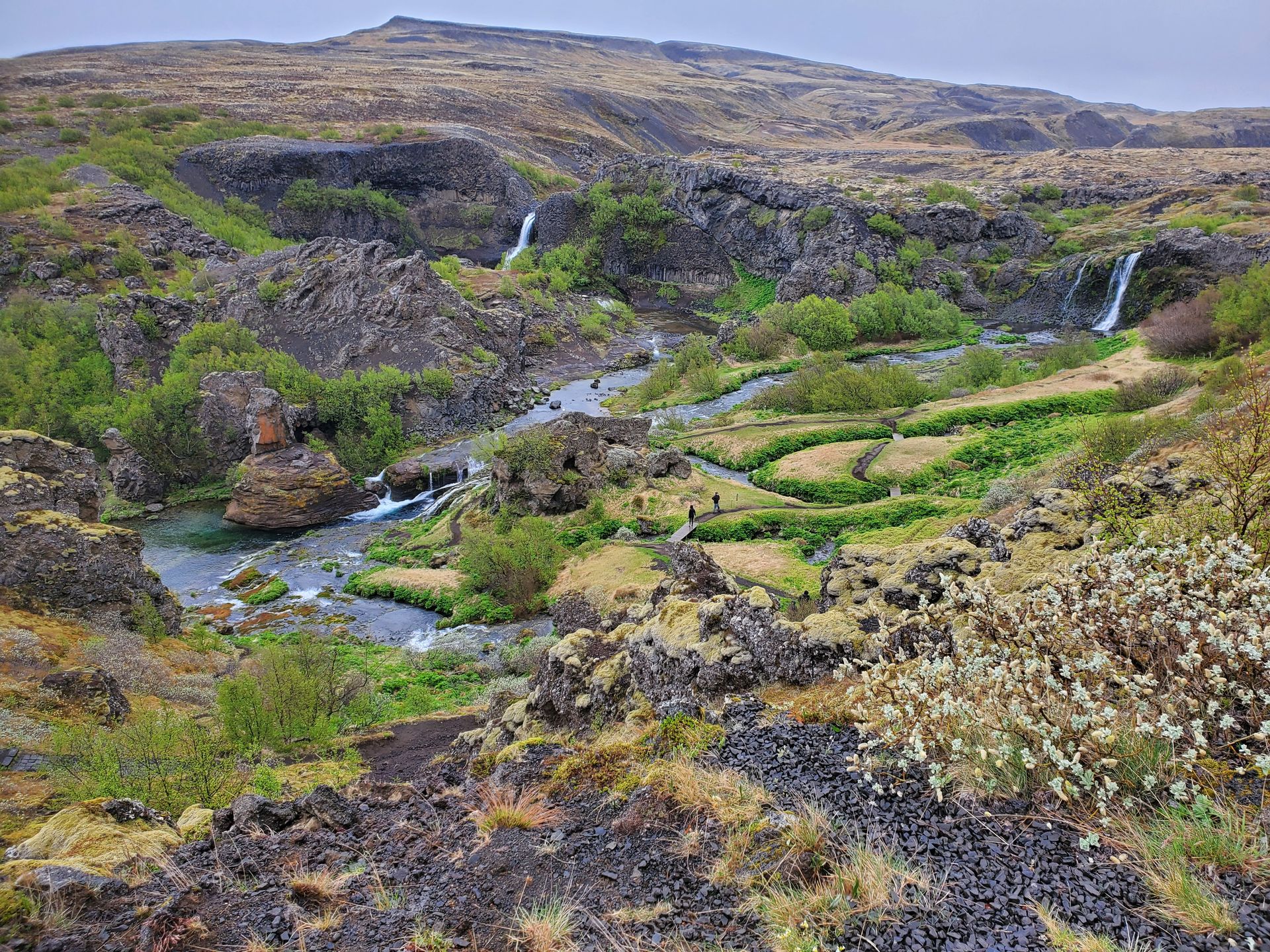Exploring the Wonders of Glaciers
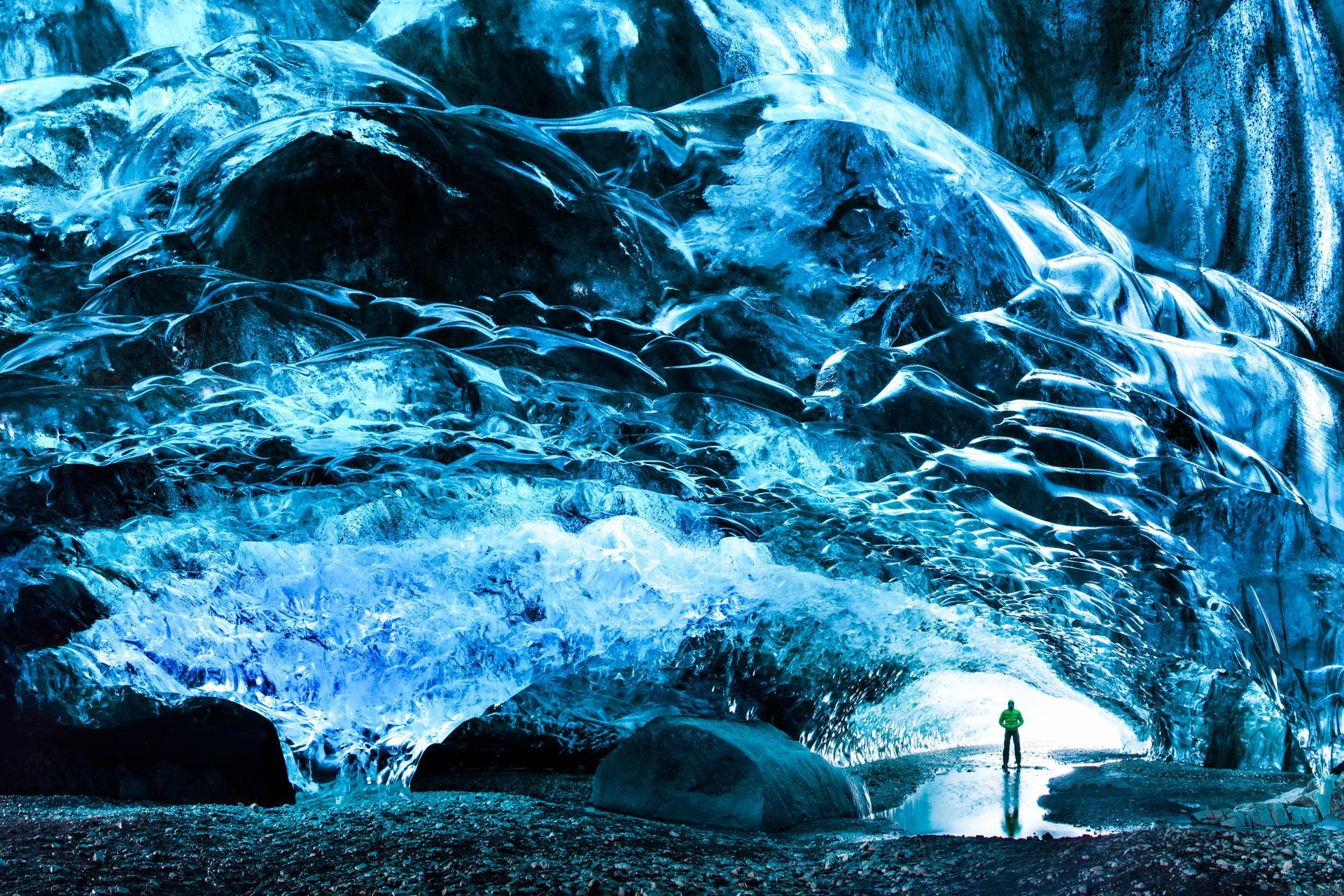
- What Defines Glaciers?
- The Formation Process of Glaciers
- Unveiling Ice Caps, Outlet Glaciers, and Ice Tongues
- The Enigma of Glacial Ice's Blue Hue
- Common Features Found in Glacier Ice
Iceland's Glaciers in the Face of Climate Change
- Tracking the Recession of Iceland's Glaciers
- Unveiling Iceland's Most Remarkable Glaciers
- Identifying the Closest Glacier to Reykjavik
- Navigating the Top Glacier Experiences in Iceland
An Exploration of Glacier Hiking and Tours in Iceland
- Can You Embark on a Solo Glacier Hike in Iceland?
- Choosing the Optimal Glacier Tour in Iceland
- Unearthing the Best Glacier Combos in Iceland
- Your Queries Addressed
Embark on an Extraordinary Journey in Iceland, the "Land of Fire and Ice"
Glaciers:
Nature's Sculptors on the Move.
While glaciers may seem inert, they are in constant motion, shaped by the inexorable pull of gravity.
These colossal ice formations have played a pivotal role in shaping mountains,
carving valleys, and transporting vast quantities of rock and sediment.
Formed over centuries, glaciers represent remnants of the Ice Age,
arising from the compaction of snow that gradually transforms into ice.
The Birth of Glaciers: An Intricate Process
Glaciers come into being through a meticulous process.
Each year, snow accumulates and partially melts during the summer thaw, leaving behind layers of snow.
This process repeats, with new snow covering the firn, a harder and icier layer of snow.
Over time, these layers accumulate, eventually compacting into a solid mass.
When this mass reaches a depth of approximately 50 meters,
the glacier begins its gradual movement, akin to an exceedingly slow-moving river.
Deciphering Ice Caps, Outlet Glaciers, and Ice Tongues
Ice caps, which span less than 50,000 square kilometers,
typically exhibit a dome-like shape, expanding outward from their center and enveloping everything in their path, including valleys,
mountains, and plains.
Outlet glaciers, also known as glacier tongues, extend down valleys from ice caps.
An ice tongue takes shape when a valley glacier advances into an ocean or lake,
potentially growing in size due to freezing water at its base or accumulating fallen snow.
These ice tongues can lose mass through melting (calving), ultimately forming icebergs, a phenomenon visible at Jökulsárlón.
The Science Behind Glacial Ice's Mesmerizing Blue Tint.
The captivating blue hue of glacier ice is attributed to the unique properties of sunlight.
When white sunlight penetrates glacier ice, it travels deeper than it does through opaque snow,
allowing the translucent or transparent ice to absorb more red light compared to blue.
Consequently, the shorter blue wavelengths are transmitted and scattered throughout the ice.
The depth of the ice influences the extent of scattering, intensifying its blue appearance.
Exploring Common Glacier Ice Features
Crevasses,
deep and narrow cracks that emerge with glacier movement,
pose considerable danger, as they can seemingly appear out of nowhere or change shape rapidly.
These crevasses, sometimes concealed by snow, can reach depths of up to twenty meters,
underscoring the importance of never venturing onto a glacier without an experienced guide.
Icefalls,
akin to frozen waterfalls,
form on steep sections of glaciers, characterized by jagged blocks known as serac.
These formations arise as glaciers swiftly traverse steep declines,
leading to the stretching and thinning of ice.
Moulins,
vertical shafts within glaciers,
retain their shape thanks to a continuous flow of water and debris.
Glacier lagoons develop at the base of glaciers as receding ice caps create space that fills with meltwater.
The Impact of Global Warming on Icelandic Glaciers
Scientists issue a sobering warning that Iceland's glaciers may disappear within the next 150 years due to the effects of global warming.
The story of Okjökull, a glacier declared "dead" by glaciologist Oddur Sigurðsson in 2014,
serves as a poignant reminder of this reality.
In 2019, a commemorative plaque bearing an inscription by Andri Snær Magnason titled 'A Letter to the Future' was erected in its place,
highlighting the urgent need for environmental action.
Discover Iceland's Grandest Glaciers
Vatnajökull and Its Outlet Glaciers
Vatnajökull, meaning "Water Glacier," stands as Iceland's largest glacier,
covering a staggering eight percent of the country's land.
This national park offers breathtaking beauty and is beloved by hikers.
Vatnajökull boasts over thirty outlet glaciers,
including Skaftafellsjökull, Svinafellsjökull, Falljökull, and Virkisjökull, each offering unique hiking experiences.
Breiðamerkurjökull and the Jökulsárlón Glacier Lagoon
Breiðamerkurjökull, emerging as a tongue of Vatnajökull, culminates at the stunningly blue Jökulsárlón Glacier Lagoon,
adorned with drifting icebergs. It is a cherished Icelandic destination, adjacent to Diamond Beach.
Visitors can explore the captivating Aurora Ice Cave, with its blue and green hues reminiscent of the northern lights.
Iceland's Second-Largest Glacier: Langjökull
Known as the "Long Glacier," Langjökull ranks as Iceland's second-largest glacier by area.
Spanning 50 kilometers in length and approximately 20 kilometers in width, it is a remarkable sight,
attracting hikers and skiers alike.
Additional Spectacular Icelandic Glaciers
- Hofsjökull: Iceland's third-largest glacier, situated in the Highlands, earned the moniker "Temple Glacier" and harbors one of the country's largest volcanoes. It serves as the source of several Icelandic rivers.
- Myrdalsjökull and Sólheimajökull: Sólheimajökull, an outlet glacier of Mýrdalsjökull, offers thrilling glacier hikes and ice cave tours, presenting mesmerizing blue ice set against black ash.
- Drangajökull: As one of Iceland's smallest glaciers,
Drangajökull is nestled in the far northwest of the Westfjords.
It is Iceland's northernmost glacier and remains stable despite its lower elevation,
making it an excellent destination for wilderness enthusiasts.
- Eyjafjallajökull: Renowned as one of the world's best hikes by National Geographic,
the Fimmvörðuháls Trail traverses between the Eyjafjallajökull and Mýrdalsjökull glaciers,
offering striking landscapes and volcanic craters formed during the 2010 eruption of Eyjafjallajökull.
- Tungnafellsjökull: Located northwest of Vatnajökull, this "Tongue-fell Glacier" resides within the caldera of a volcanic mountain. A 10-kilometer hike to the summit of Háhyrna via Þvermóður presents stunning views of the glacier.
- Þórisjökull: Positioned between Langjökull and the Ok shield volcano to its east, Þórisjökull bears its name from an Icelandic saga. Accessible via the old Kaldadalsvegur mountain track, it is a captivating destination.
- Eiríksjökull: Situated northwest of Langjökull, Eiríksjökull reigns as the largest table mountain in Iceland, with an elevation of 1,675 meters at its highest point. Cairns along the trailhead guide the way to the glacier.
- Þrándarjökull: Located 20 kilometers from Vatnajökull, this petite yet picturesque glacier is accessible via the Geithelladalur valley, where the glacier's meltwaters flow as the River Geithellaá.
- Tindafjallajökull: Nestled in the highlands of Iceland, Þórsmörk is an area celebrated for its hiking opportunities, nestled between the glaciers Tindafjallajökull and Eyjafjallajökull. A guided hike to the summit of Snæfellsjökull Glacier, offering panoramic views from the Reykjanes Peninsula to the Westfjords, is also a captivating option.
Proximity to Reykjavik: Mýrdalsjökull
Mýrdalsjökull, located in the southern Highlands, ranks as Iceland's fourth-largest ice cap, spanning an immense 600 square kilometers. It boasts a peak nearly 1,500 meters high and is particularly notable for concealing the formidable Katla volcano.
Its accessibility from the capital makes it a renowned destination for glacier hiking and ice climbing.
The Historical Evolution of Glacier Hiking and Tours in Iceland
The medieval Saga of the People of Laxardalir recounts the journeys of early settlers who crossed Ok Glacier.
The first recorded glacier hike in Iceland dates back to 1912 when mountaineers ventured onto Vatnajökull glacier.
However, it was not until the 1950s and 60s that glacier hiking gained popularity in Iceland.
Hiking Glaciers in Iceland: Always With a Guide
- What Defines Glaciers?
- The Formation Process of Glaciers
- Unveiling Ice Caps, Outlet Glaciers, and Ice Tongues
- The Enigma of Glacial Ice's Blue Hue
- Common Features Found in Glacier Ice
Iceland's Glaciers in the Face of Climate Change
- Tracking the Recession of Iceland's Glaciers
- Unveiling Iceland's Most Remarkable Glaciers
- Identifying the Closest Glacier to Reykjavik
- Navigating the Top Glacier Experiences in Iceland
An Exploration of Glacier Hiking and Tours in Iceland
- Can You Embark on a Solo Glacier Hike in Iceland?
- Choosing the Optimal Glacier Tour in Iceland
- Unearthing the Best Glacier Combos in Iceland
- Your Queries Addressed
Embark on an Extraordinary Journey in Iceland, the "Land of Fire and Ice"
Glaciers: Nature's Sculptors on the Move
While glaciers may seem inert, they are in constant motion, shaped by the inexorable pull of gravity. These colossal ice formations have played a pivotal role in shaping mountains, carving valleys, and transporting vast quantities of rock and sediment. Formed over centuries, glaciers represent remnants of the Ice Age, arising from the compaction of snow that gradually transforms into ice.
The Birth of Glaciers: An Intricate Process
Glaciers come into being through a meticulous process. Each year, snow accumulates and partially melts during the summer thaw, leaving behind layers of snow. This process repeats, with new snow covering the firn, a harder and icier layer of snow. Over time, these layers accumulate, eventually compacting into a solid mass. When this mass reaches a depth of approximately 50 meters, the glacier begins its gradual movement, akin to an exceedingly slow-moving river.
Deciphering Ice Caps, Outlet Glaciers, and Ice Tongues
Ice caps, which span less than 50,000 square kilometers, typically exhibit a dome-like shape, expanding outward from their center and enveloping everything in their path, including valleys, mountains, and plains.
Outlet glaciers, also known as glacier tongues, extend down valleys from ice caps. An ice tongue takes shape when a valley glacier advances into an ocean or lake, potentially growing in size due to freezing water at its base or accumulating fallen snow. These ice tongues can lose mass through melting (calving), ultimately forming icebergs, a phenomenon visible at Jökulsárlón.
The Science Behind Glacial Ice's Mesmerizing Blue Tint
The captivating blue hue of glacier ice is attributed to the unique properties of sunlight. When white sunlight penetrates glacier ice, it travels deeper than it does through opaque snow, allowing the translucent or transparent ice to absorb more red light compared to blue. Consequently, the shorter blue wavelengths are transmitted and scattered throughout the ice. The depth of the ice influences the extent of scattering, intensifying its blue appearance.
Exploring Common Glacier Ice Features
Crevasses, deep and narrow cracks that emerge with glacier movement, pose considerable danger, as they can seemingly appear out of nowhere or change shape rapidly. These crevasses, sometimes concealed by snow, can reach depths of up to twenty meters, underscoring the importance of never venturing onto a glacier without an experienced guide.
Icefalls, akin to frozen waterfalls, form on steep sections of glaciers, characterized by jagged blocks known as serac. These formations arise as glaciers swiftly traverse steep declines, leading to the stretching and thinning of ice.
Moulins, vertical shafts within glaciers, retain their shape thanks to a continuous flow of water and debris.
Glacier lagoons develop at the base of glaciers as receding ice caps create space that fills with meltwater.
The Impact of Global Warming on Icelandic Glaciers
Scientists issue a sobering warning that Iceland's glaciers may disappear within the next 150 years due to the effects of global warming. The story of Okjökull, a glacier declared "dead" by glaciologist Oddur Sigurðsson in 2014, serves as a poignant reminder of this reality. In 2019, a commemorative plaque bearing an inscription by Andri Snær Magnason titled 'A Letter to the Future' was erected in its place, highlighting the urgent need for environmental action.
Discover Iceland's Grandest Glaciers
Vatnajökull and Its Outlet Glaciers
Vatnajökull, meaning "Water Glacier," stands as Iceland's largest glacier, covering a staggering eight percent of the country's land. This national park offers breathtaking beauty and is beloved by hikers. Vatnajökull boasts over thirty outlet glaciers, including Skaftafellsjökull, Svinafellsjökull, Falljökull, and Virkisjökull, each offering unique hiking experiences.
Breiðamerkurjökull and the Jökulsárlón Glacier Lagoon
Breiðamerkurjökull, emerging as a tongue of Vatnajökull, culminates at the stunningly blue Jökulsárlón Glacier Lagoon, adorned with drifting icebergs. It is a cherished Icelandic destination, adjacent to Diamond Beach. Visitors can explore the captivating Aurora Ice Cave, with its blue and green hues reminiscent of the northern lights.
Iceland's Second-Largest Glacier: Langjökull
Known as the "Long Glacier," Langjökull ranks as Iceland's second-largest glacier by area. Spanning 50 kilometers in length and approximately 20 kilometers in width, it is a remarkable sight, attracting hikers and skiers alike.
Additional Spectacular Icelandic Glaciers
- Hofsjökull: Iceland's third-largest glacier, situated in the Highlands, earned the moniker "Temple Glacier" and harbors one of the country's largest volcanoes. It serves as the source of several Icelandic rivers.
- Myrdalsjökull and Sólheimajökull: Sólheimajökull, an outlet glacier of Mýrdalsjökull, offers thrilling glacier hikes and ice cave tours, presenting mesmerizing blue ice set against black ash.
- Drangajökull: As one of Iceland's smallest glaciers, Drangajökull is nestled in the far northwest of the Westfjords. It is Iceland's northernmost glacier and remains stable despite its lower elevation, making it an excellent destination for wilderness enthusiasts.
- Eyjafjallajökull: Renowned as one of the world's best hikes by National Geographic, the Fimmvörðuháls Trail traverses between the Eyjafjallajökull and Mýrdalsjökull glaciers, offering striking landscapes and volcanic craters formed during the 2010 eruption of Eyjafjallajökull.
- Tungnafellsjökull: Located northwest of Vatnajökull, this "Tongue-fell Glacier" resides within the caldera of a volcanic mountain. A 10-kilometer hike to the summit of Háhyrna via Þvermóður presents stunning views of the glacier.
- Þórisjökull: Positioned between Langjökull and the Ok shield volcano to its east, Þórisjökull bears its name from an Icelandic saga. Accessible via the old Kaldadalsvegur mountain track, it is a captivating destination.
- Eiríksjökull: Situated northwest of Langjökull, Eiríksjökull reigns as the largest table mountain in Iceland, with an elevation of 1,675 meters at its highest point. Cairns along the trailhead guide the way to the glacier.
- Þrándarjökull: Located 20 kilometers from Vatnajökull, this petite yet picturesque glacier is accessible via the Geithelladalur valley, where the glacier's meltwaters flow as the River Geithellaá.
- Tindafjallajökull: Nestled in the highlands of Iceland, Þórsmörk is an area celebrated for its hiking opportunities, nestled between the glaciers Tindafjallajökull and Eyjafjallajökull. A guided hike to the summit of Snæfellsjökull Glacier, offering panoramic views from the Reykjanes Peninsula to the Westfjords, is also a captivating option.
Proximity to Reykjavik: Mýrdalsjökull
Mýrdalsjökull, located in the southern Highlands, ranks as Iceland's fourth-largest ice cap, spanning an immense 600 square kilometers. It boasts a peak nearly 1,500 meters high and is particularly notable for concealing the formidable Katla volcano. Its accessibility from the capital makes it a renowned destination for glacier hiking and ice climbing.
The Historical Evolution of Glacier Hiking and Tours in Iceland
The medieval Saga of the People of Laxardalir recounts the journeys of early settlers who crossed Ok Glacier. The first recorded glacier hike in Iceland dates back to 1912 when mountaineers ventured onto Vatnajökull glacier. However, it was not until the 1950s and 60s that glacier hiking gained popularity in Iceland.
Hiking Glaciers in Iceland: Always With a Guide
Solo glacier hikes in Iceland are strongly discouraged. Guides undergo rigorous training and receive ongoing updates to their skills, encompassing risk management, navigation, first-aid, life-saving techniques, crevasse rescue, ice climbing, and communication and management proficiency.
Choosing the Ideal Glacier Hike Tour in Iceland
Classic glacier hiking tours are available on various outlet glaciers of Vatnajökull and Myrdalsjökull. Langjökull is renowned for snowmobiling, while Snaefellsjökull and smaller glaciers offer mountaineering experiences. For the finest glacier walks or hikes, consider visiting Myrdalsjökull/Sólheimajökull or one of Vatnajökull's glacier tongues, such as Virkisjökull, Falljökull, or Breiðamerkurjökull, which also offer ice cave tours.
Answering Your Queries: Glacier Hiking in Iceland
- When Is the Best Time for Glacier Hiking in Iceland?
- Glacier hiking can be enjoyed year-round, with a few tours accessible during the summer months. For ice cave exploration combined with glacier walking, the caves are safest and most accessible from November to March.
- How Long Is a Typical Glacier Hike in Iceland?
- The duration of a glacier hike varies depending on the glacier's accessibility and specific route. Some hikes are longer than others, and when combining a hike with an ice cave exploration, additional time should be allotted. Icelandic Mountain Guides typically offer glacier hikes lasting between two and five hours, so plan to dedicate an afternoon to your tour.
- Is Glacier Hiking in Iceland Worth It?
- Absolutely! Glacier hikes in Iceland offer a unique trekking experience set against a backdrop of captivating colors and mesmerizing ice formations.
- Can You Hike Sólheimajökull Glacier Without a Guide?
- While a short hike from the car park allows you to view the glacier, venturing onto the ice without a guide is perilous due to the ever-shifting nature of the glacier, including hidden crevasses.
- Can You Hike Glaciers Solo in Iceland?
- No, glacier hiking, even for experienced hikers, requires distinct skills and safety measures. Our guides possess the expertise necessary to navigate the dynamic world of ice.
- Can I Visit a Glacier Without a Reservation?
- While last-minute bookings may be possible, it is advisable to reserve your glacier hike in advance to ensure availability.
- Is Glacier Hiking in Iceland Physically Demanding?
- With expert guidance and provided equipment, glacier hikes in Iceland are surprisingly accessible, suitable for various fitness levels. You will receive an ice axe and crampons and be instructed on their use before embarking on your hike. Your guide will lead you safely across the glacier's surface.
Solo glacier hikes in Iceland are strongly discouraged.
Guides undergo rigorous training and receive ongoing updates to their skills,
encompassing risk management, navigation, first-aid, life-saving techniques,
crevasse rescue, ice climbing, and communication and management proficiency.
Choosing the Ideal Glacier Hike Tour in Iceland
Classic glacier hiking tours are available on various outlet glaciers of Vatnajökull and Myrdalsjökull.
Langjökull is renowned for snowmobiling, while Snaefellsjökull and smaller glaciers offer mountaineering experiences.
For the finest glacier walks or hikes, consider visiting Myrdalsjökull/Sólheimajökull or one of Vatnajökull's glacier tongues,
such as Virkisjökull, Falljökull, or Breiðamerkurjökull, which also offer ice cave tours.
Answering Your Queries: Glacier Hiking in Iceland
- When Is the Best Time for Glacier Hiking in Iceland?
- Glacier hiking can be enjoyed year-round, with a few tours accessible during the summer months. For ice cave exploration combined with glacier walking, the caves are safest and most accessible from November to March.
- How Long Is a Typical Glacier Hike in Iceland?
- The duration of a glacier hike varies depending on the glacier's accessibility and specific route. Some hikes are longer than others, and when combining a hike with an ice cave exploration, additional time should be allotted. Icelandic Mountain Guides typically offer glacier hikes lasting between two and five hours, so plan to dedicate an afternoon to your tour.
- Is Glacier Hiking in Iceland Worth It?
- Absolutely! Glacier hikes in Iceland offer a unique trekking experience set against a backdrop of captivating colors and mesmerizing ice formations.
- Can You Hike Sólheimajökull Glacier Without a Guide?
- While a short hike from the car park allows you to view the glacier, venturing onto the ice without a guide is perilous due to the ever-shifting nature of the glacier, including hidden crevasses.
- Can You Hike Glaciers Solo in Iceland?
- No, glacier hiking, even for experienced hikers, requires distinct skills and safety measures. Our guides possess the expertise necessary to navigate the dynamic world of ice.
- Can I Visit a Glacier Without a Reservation?
- While last-minute bookings may be possible, it is advisable to reserve your glacier hike in advance to ensure availability.
- Is Glacier Hiking in Iceland Physically Demanding?
- With expert guidance and provided equipment, glacier hikes in Iceland are surprisingly accessible, suitable for various fitness levels. You will receive an ice axe and crampons and be instructed on their use before embarking on your hike. Your guide will lead you safely across the glacier's surface.
